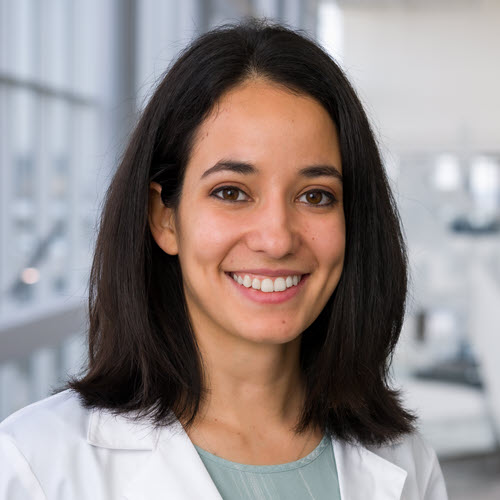Student Profile in Protein Aggregation
Sofia Bali
Molecular Biophysics Graduate Program
Mentors: Lukasz Joachimiak, Ph.D.
Undergraduate Degree: Biochemistry, Bioinformatics and Math Minors
Undergraduate Institution: New Mexico State University
Hometown: Las Cruces, NM
Awards/Fellowships: Ruth L. Kirschstein National Research Service Award, F31, NINDS, NIH Tau Leader Fellowship Award, Rainwater Charitable Foundation NIH T32 Molecular Biophysics Training Program, UTSW Chan Zuckerberg initiative Neurodegeneration Challenge Network, Community Project Undergraduate New Mexico Alliance for Minority Participation Research Scholar NMSU President’s Associate Excellence Scholarship NMSU Honors College Research Scholar
How did you become interested in science and/or research?
I had always been interested in biology, and starting my bachelor's, I decided on a degree in biochemistry as a start in the biomedical field. Then my research interest took off because of the mentorship and opportunities I had throughout my undergraduate studies. In an intro to biochemistry course, we had speakers with different careers share their experiences, and I was amazed by the passion that the research faculty talked about their work and the emphasis they had on exploration and free thinking. The joy and excitement of the faculty made me want to explore research experiences. Through the support of great mentors, my passion for research and working in a community of scientists grew and pushed me to pursue a career in research.
Please describe your research.
My project uses biophysics and computational biology tools to understand the structural states of proteins associated with neurodegenerative diseases and, more specifically, tauopathies. The goal is to understand the structural states of the protein tau in its monomer form before it forms the disease-associated amyloid fibrils. This project leverages computational modeling tools such as molecular dynamics and Rosetta to identify specific interactions and structural states in tau. Then we use experimental techniques, such as cross-linking mass spectrometry, fluorescence assays, in-cell aggregation assays, and more, to test whether the interactions identified behave in the way predicted. Overall, this project works to identify specific structural transitions that push tau from its functional monomeric state into the aggregation-prone state that can form disease-associated structures.
Why did you choose UTSW for graduate school?
UTSW offers a comprehensive umbrella program that allows students to work on research that is not limited to one perspective. This was exciting as it was a great way to specialize in a set of skills while maintaining a good understanding of a broader range of science. In addition, another key element that convinced me to choose UTSW for my graduate studies was the interaction of the faculty with the students and the community of students with each other. The environment was welcoming, and I saw how students took care and interest in supporting each other and maintaining a sense of community.
What do you think makes the Mechanisms of Disease and Translational Science Track one of the best?
One of the key benefits of graduate school at UTSW is the high quality and collaboration in the research done here. The program supports connecting students and labs work across many techniques and scientific questions, providing a broad knowledge base and tools to work on exciting science.
What do you love about the Mechanisms of Disease and Translational Science Track strong>
Working in the Biophysics program at UTSW, I have had a great experience throughout my studies. The program's structure has allowed me to spend most of my time focused on my project, working in the lab, and learning the different techniques required for my research.
– Sofia Bali

